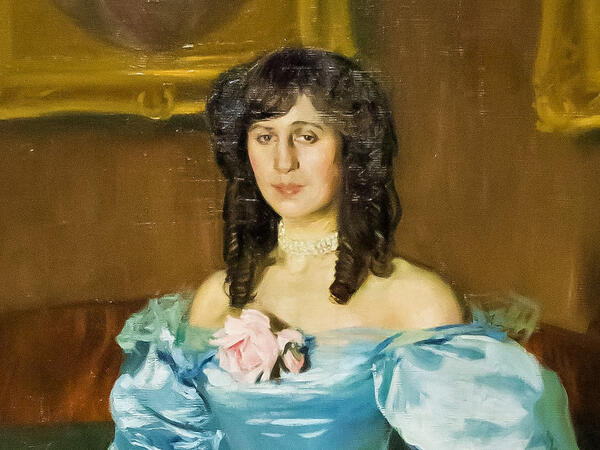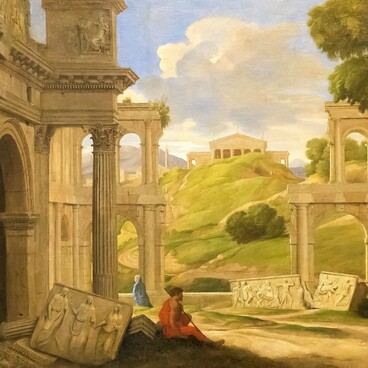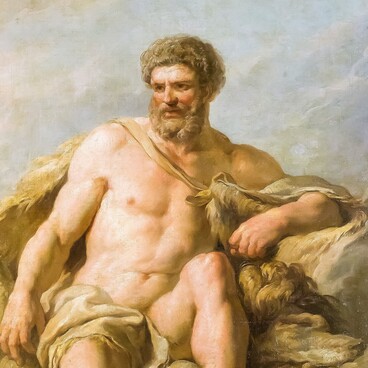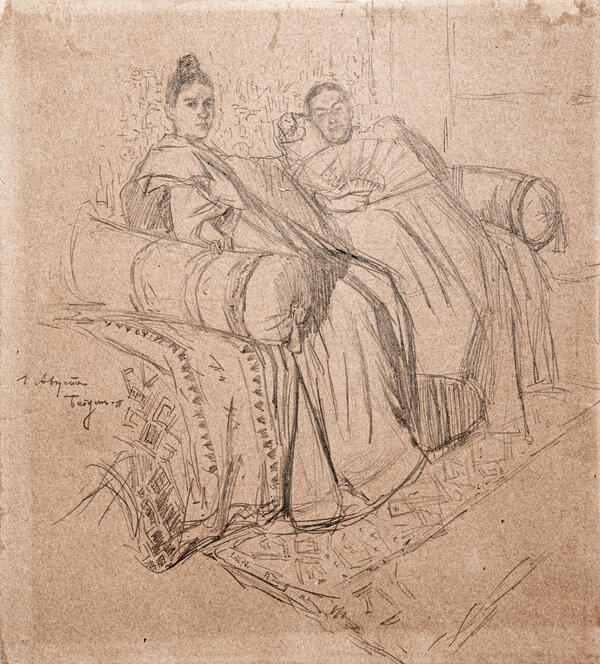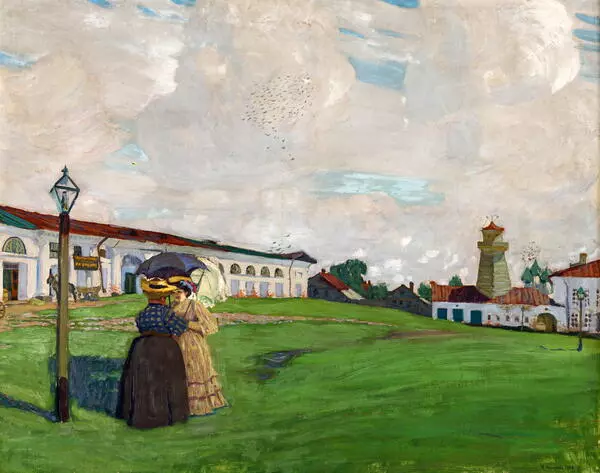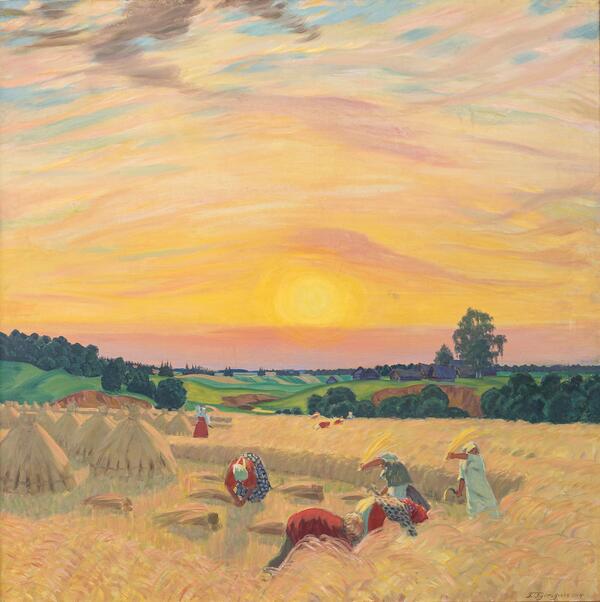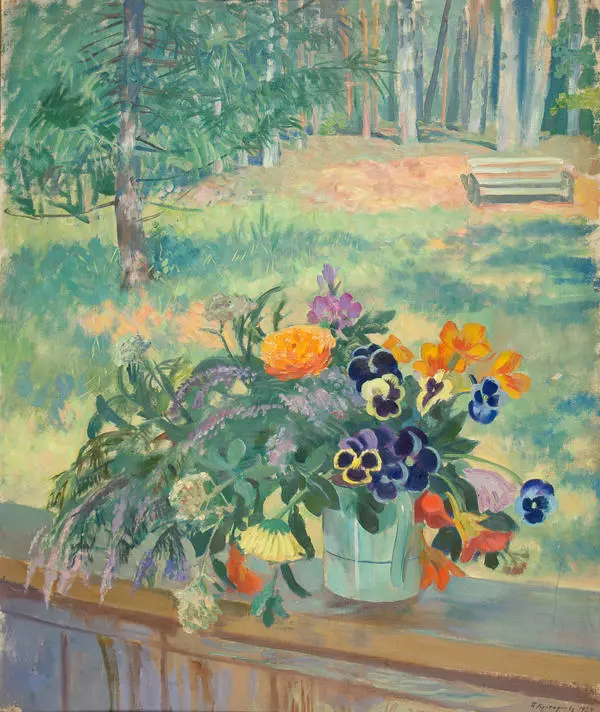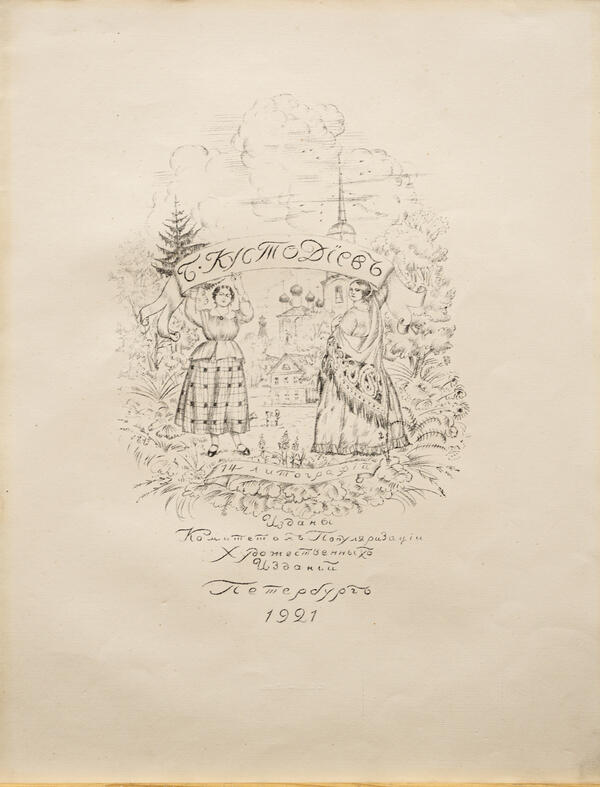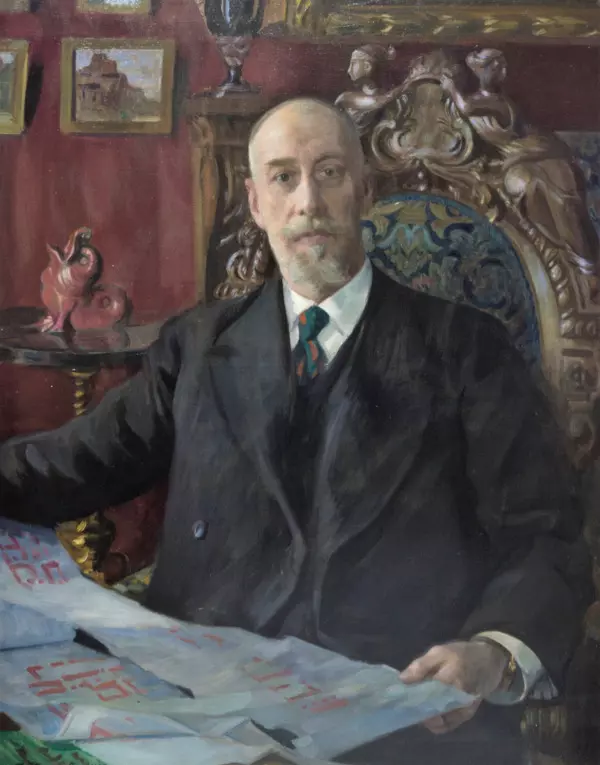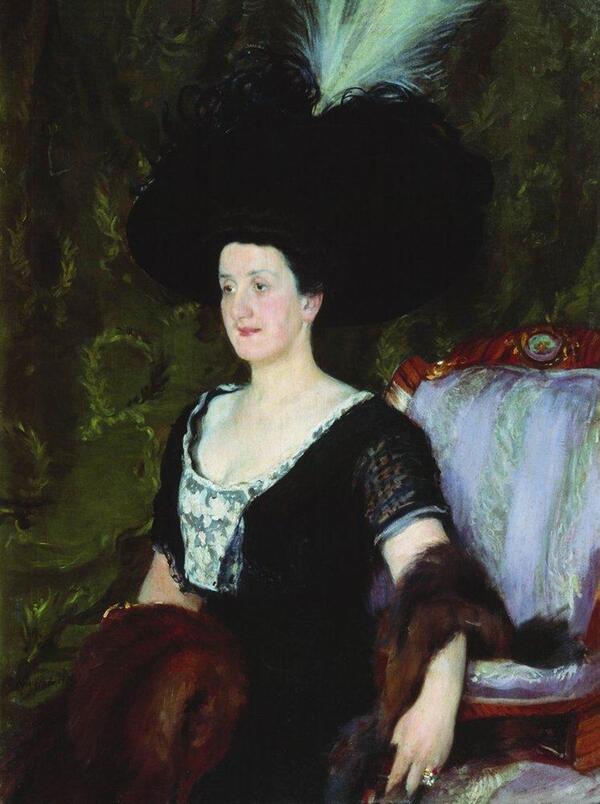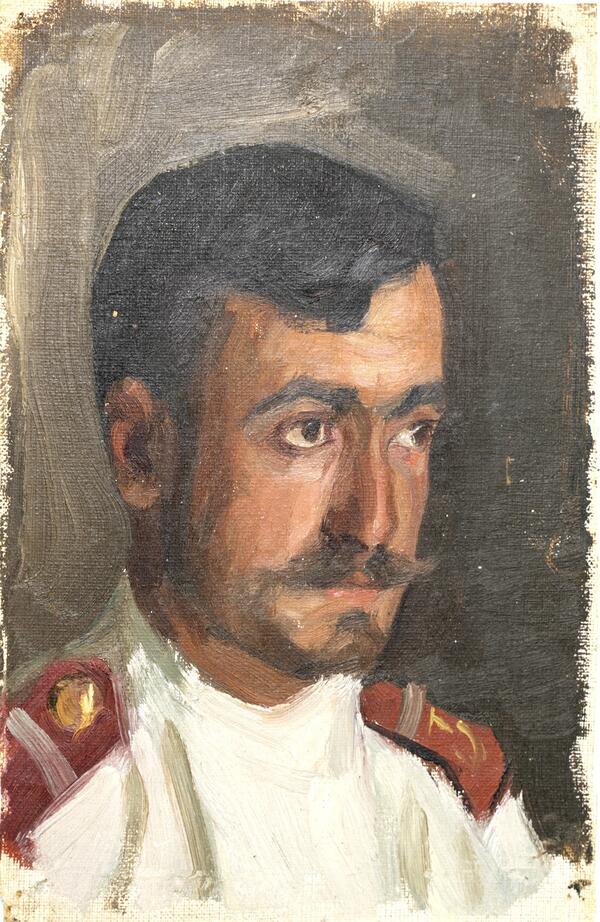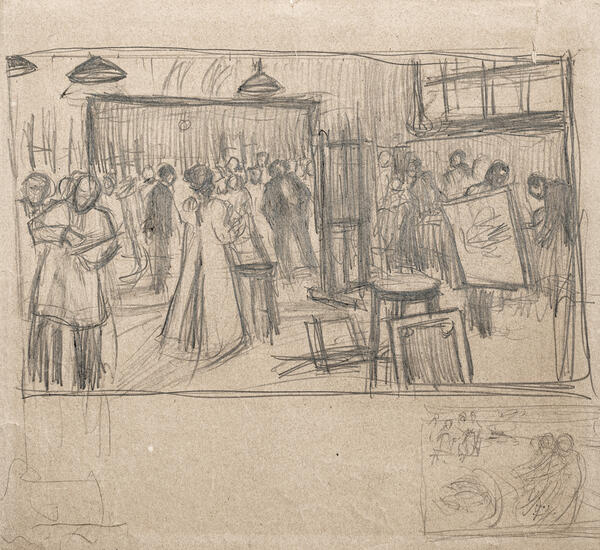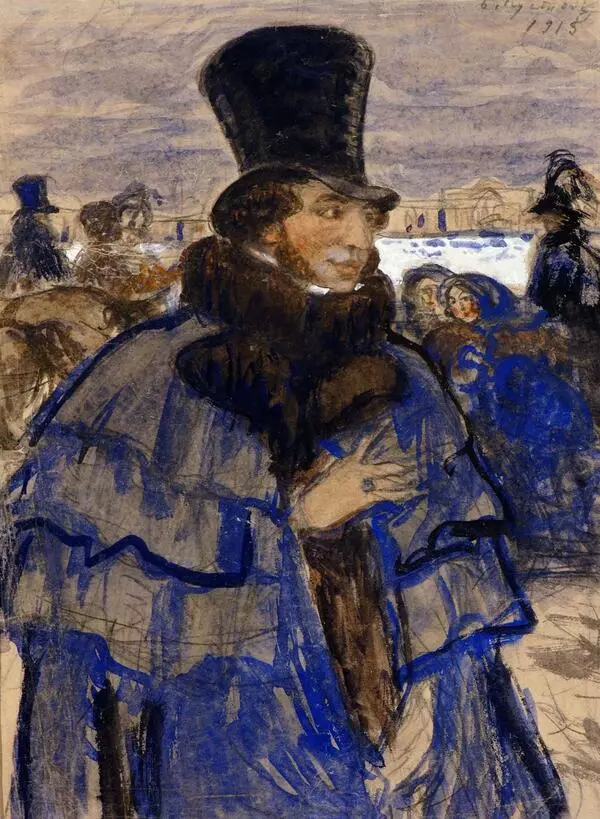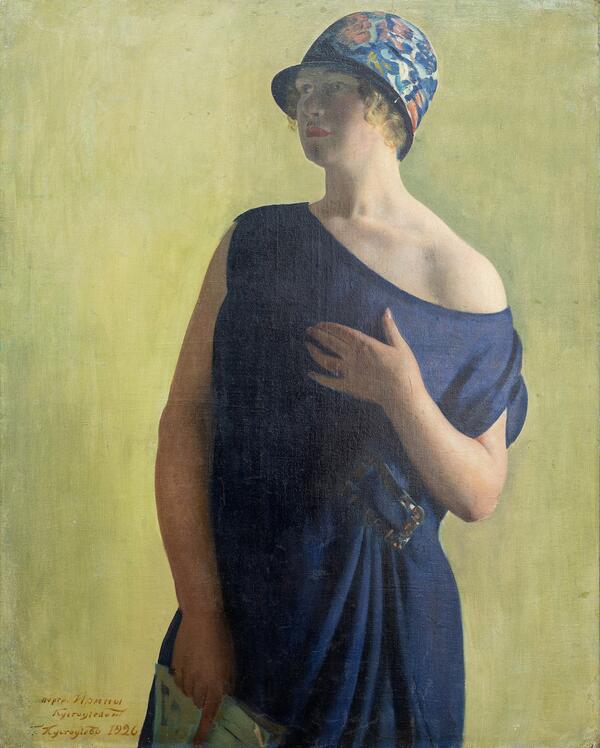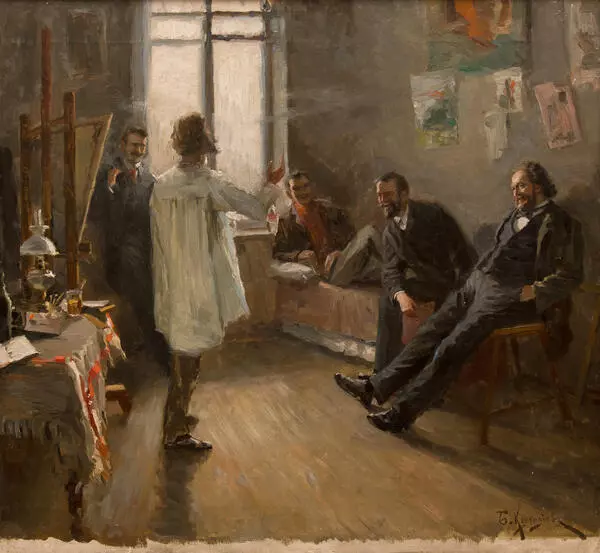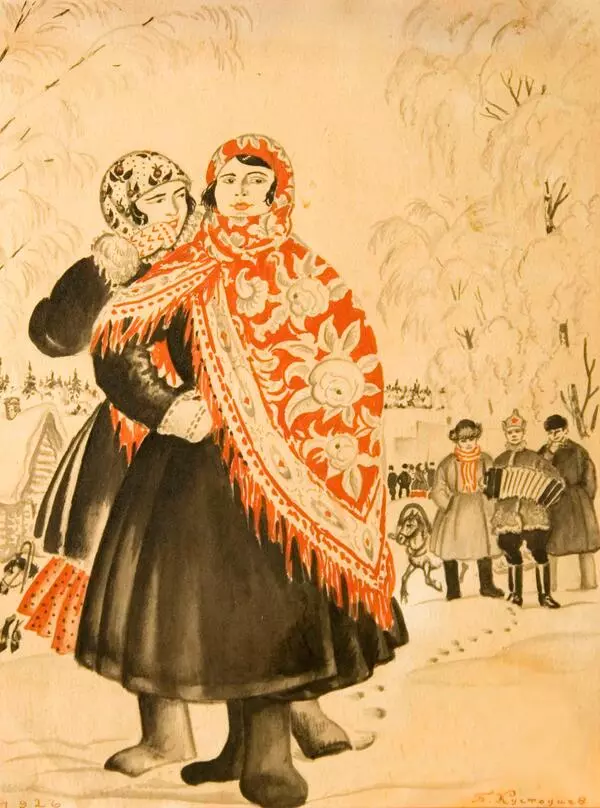Boris Kustodiev portrayed a girl in a fluffy dress, similar to the outfits of the 1830s — 1840s. At the same time, he painted the interior of even more previous times — a massive sofa and portraits of this type were common in the 18th century. In order to create an atmosphere of antiquity and mystery, the painter chose a muted color scheme for the background. The dark background contrasts with the brightly shimmering blue dress, which adds more theatricality to the canvas.
Such portraits were typical of the Art Nouveau era. Artists from the circle of Boris Kustodiev constantly looked to the theme of the past centuries, their artwork became distinctive for stylization and theatrical effects. In 1910, Boris Kustodiev joined the Mir Iskusstva (World of Art) movement — its members preferred to look for ideals in the works of the Baroque and Empire, as well as old national traditions. Subsequently, the artist would derive inspiration from Russian folk art. He became famous for his bright popular paintings with beautiful merchant women and colorful Maslenitsa festivals.
It is known that the same year when “Portrait of a Woman in Blue” was painted, Margarita Lagrange-Sudkovskaya was “married by lawful marriage to a cornet of the reserve of the Guards Cavalry, a hereditary nobleman” — Vladimir Lagrange. It can be assumed that the portrait was ordered in time for this event. The work entered the museum in 1962 from the collection of Yury Bakhrushin, the son of the famous collector Alexey Bakhrushin.

